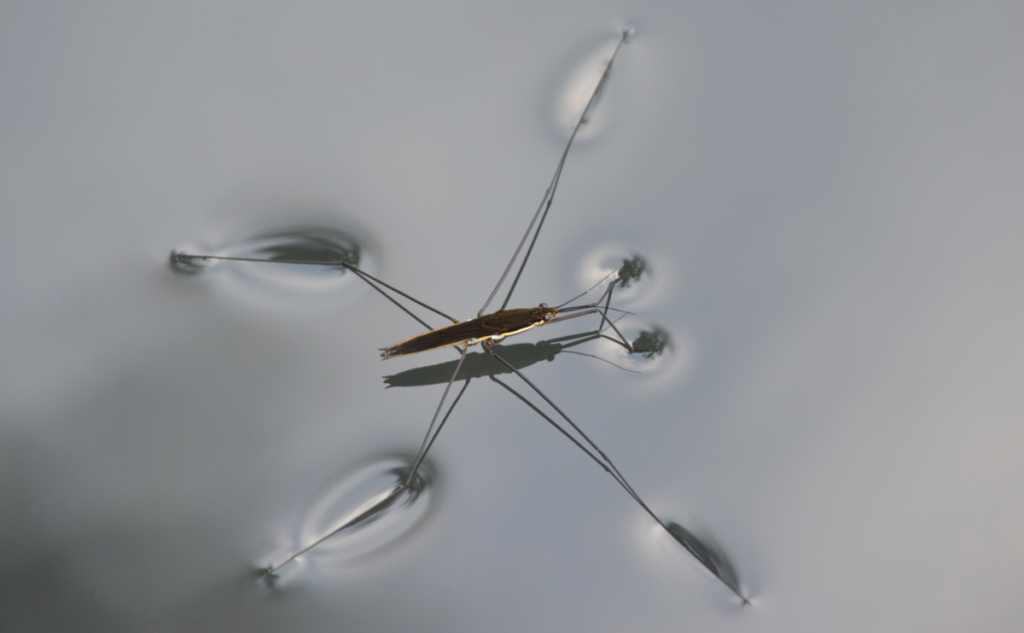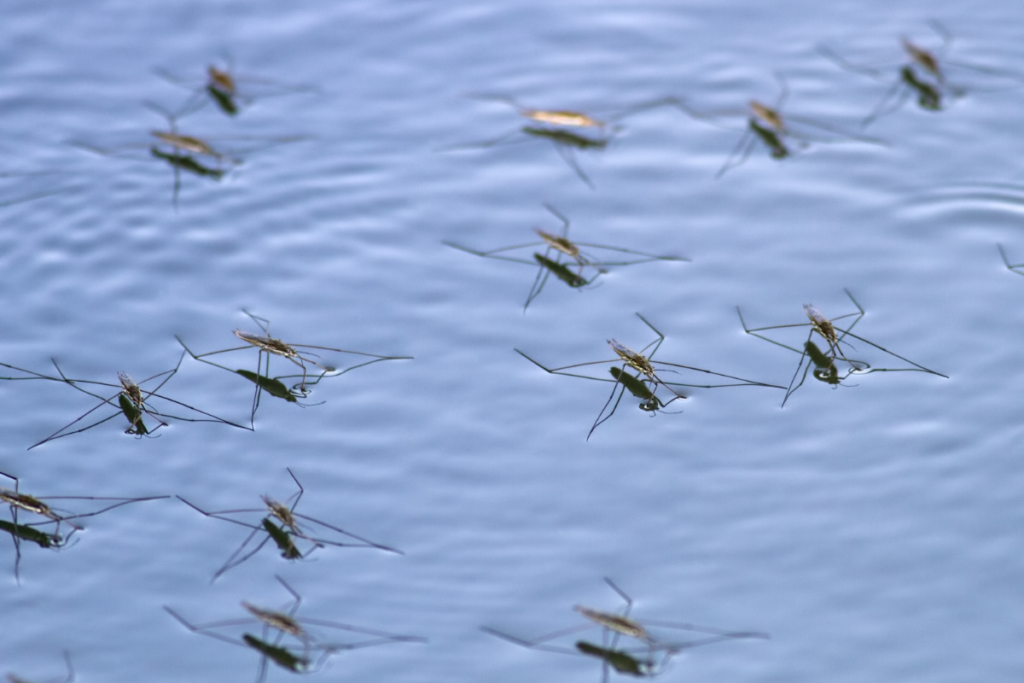Welcome back to the Lab!
Striders, skeeters, skippers, water bugs, pond skaters, or Jesus bugs; these predacious, aquatic insects go many common names and are some of the first insects to show up when spring rolls around. Whatever you choose to call them, water striders are found pretty much wherever there’s slow-moving or standing water. Ponds, puddles, calm riverbanks; even the open ocean.
That’s right; despite claims that insects have colonized everywhere except the ocean, a few species of gerrids (from the family name, Gerridae) have managed to do just that. Okay, so they live in the air-water interface and cannot survive below the surface. I’m still counting this one.
5 of the 47 oceanic species in the genus Halobates are truly pelagic, meaning they inhabit the open ocean and are only found in coastal water following storms (you’d be pretty susceptible to being blown off course too if you were that size). While both their freshwater cousins and coastal brethren are known predators, little is known about the eating habits of the open ocean dwellers. It is suspected that they eat zooplankton, fish eggs, and dead jellyfish.

Here in Montana, we are more accustomed to freshwater water striders. They inhabit many canals and irrigation ditches, small ponds, riverbanks, you name it. We have a small colony, collected in the creek by the Montana Natural History Center, that we use for many educational programs, including lessons on biomimicry. After careful observation, we prompt students to design a boat based on the body structure of these fascinating insects.
There are many factors that go into keeping water striders afloat, but one key aspect (the one that can be replicated on a larger scale by young engineering minds) is the long, slender legs that distribute their weight across a large surface area. Combined with the high surface tension of water and the help of densely-packed, hydrophobic hairs, water striders are able thrive at the air-water interface.

Despite their docile appearance, water striders can be aggressive and territorial towards other gerrids. Adults do not recognize their offspring and will readily cannibalize nymphs, kin or not. During the mating season, males will aggressively defend their territories and any female within by drumming on the water’s surface to alert other potential suitors. However, during the non-mating season, water striders can be found in large groups, working together to find food (usually other insects that have fallen into the water), with groups breaking off if the population becomes too dense.
As the weather continues to warm, adult striders will be found in larger numbers as they emerge from hibernation to stretch their long, spindly legs. They are especially active on sunny afternoons, and before too long, we’ll start seeing strider nymphs skittering around the water’s surface too.
Until next time, thanks for visiting the lab!
Bug Wrangler Brenna
brenna@missoulabutterflyhouse.org
Want to revisit a previous Notes from the Lab issue? Check out our archive! Do you want to request a subject for an upcoming issue? Email me at the address above and put “Notes from the Lab” in the subject line.